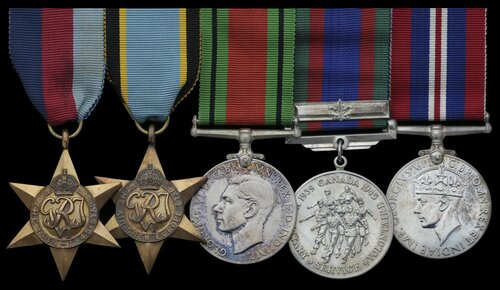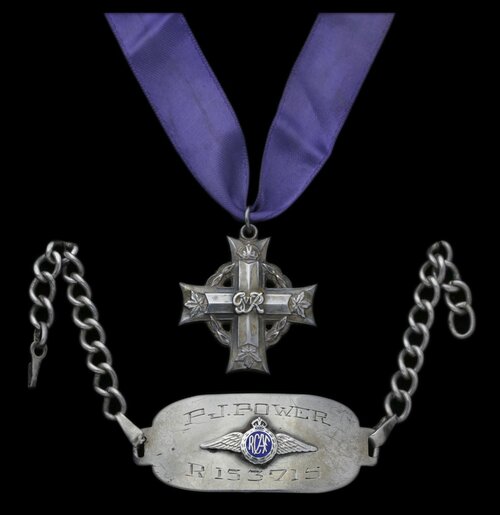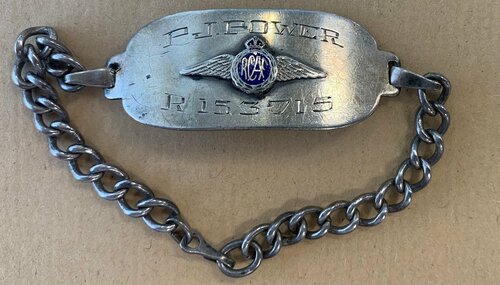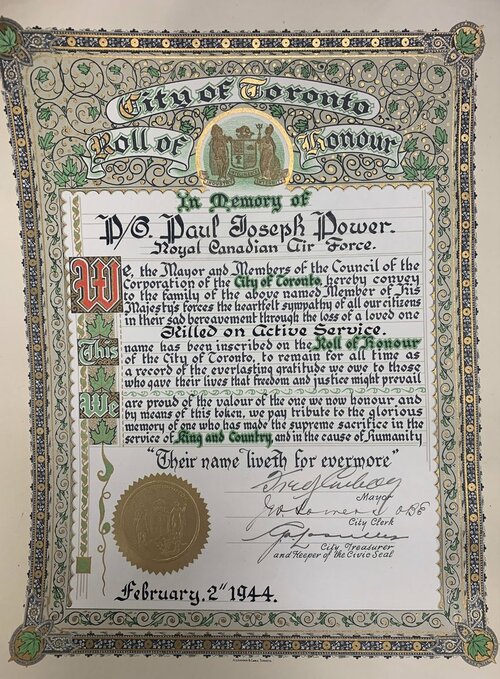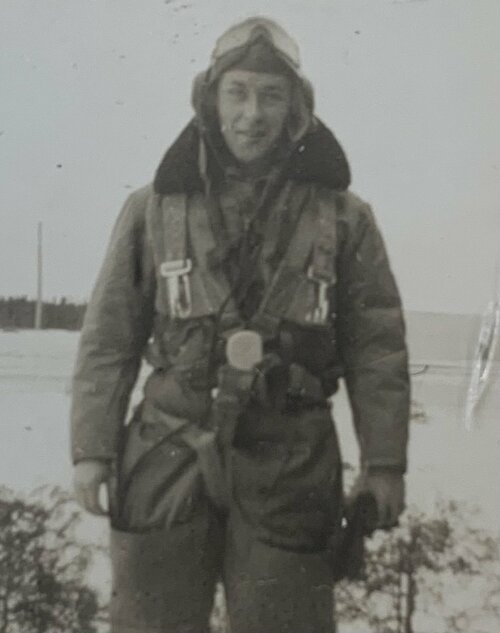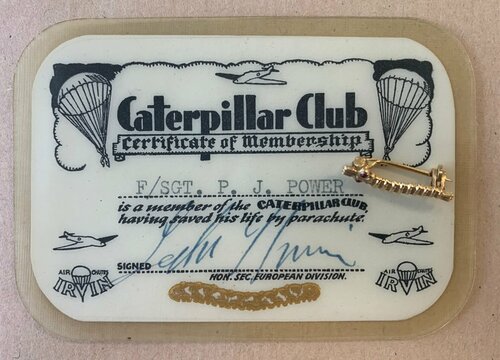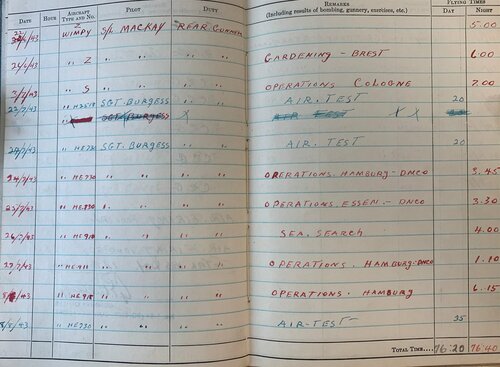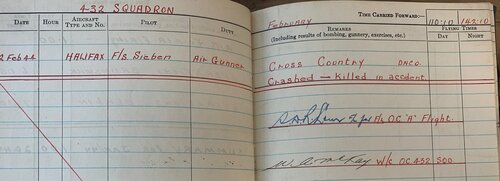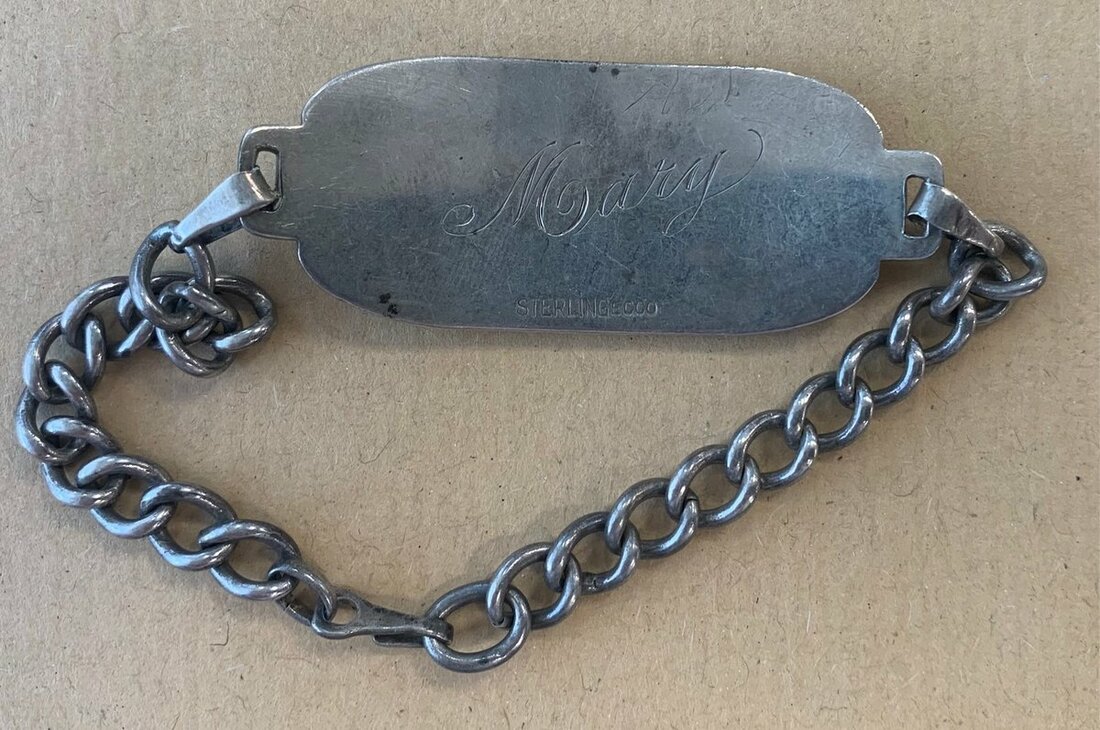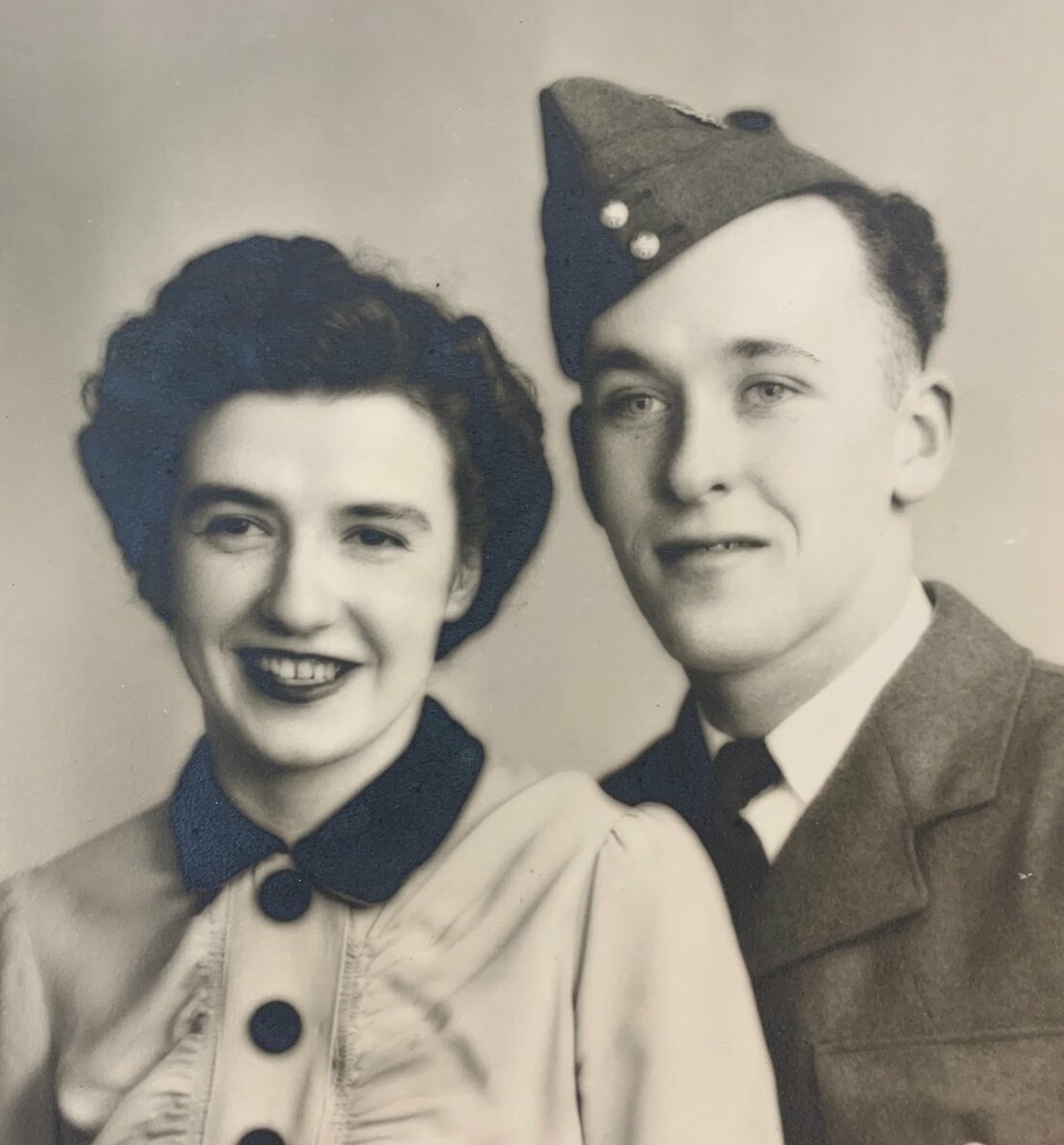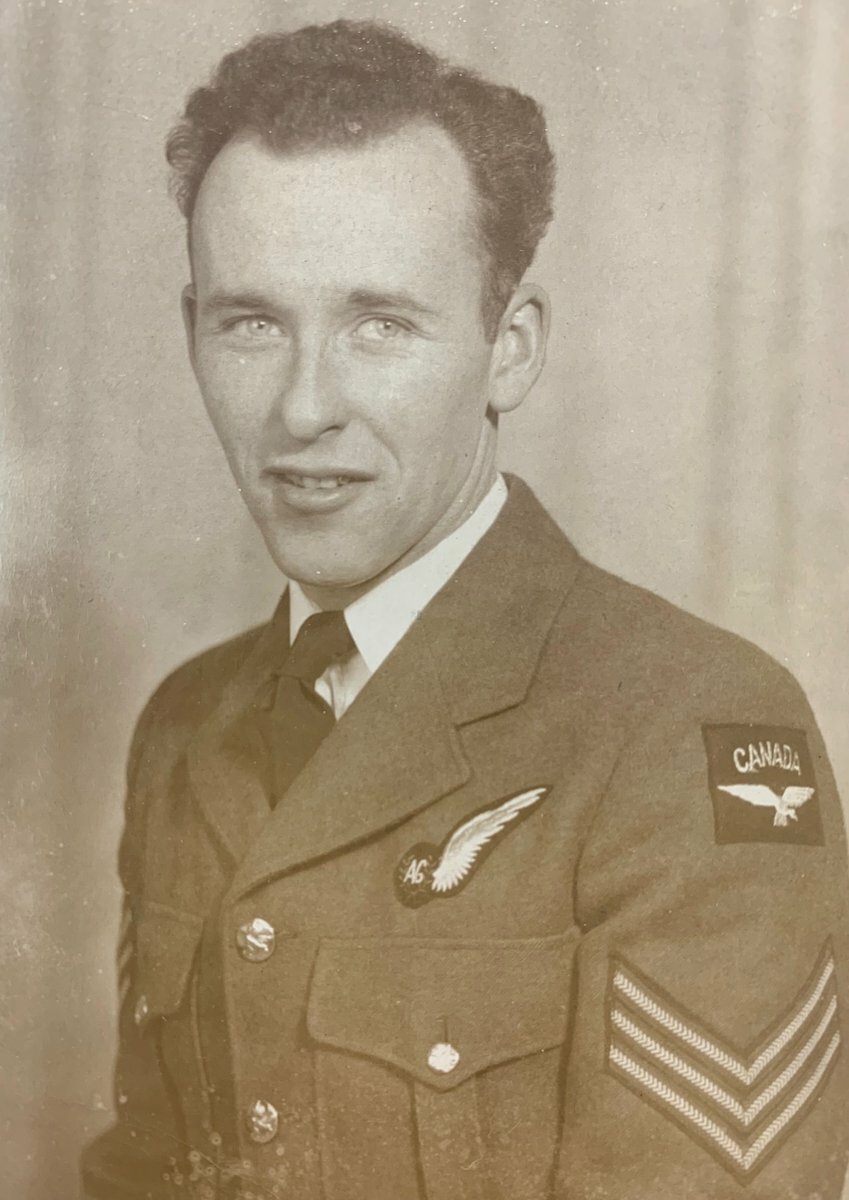Auction: 22001 - Orders, Decorations and Medals
Lot: 303
(x) A poignant and very complete campaign group of six awarded to Flight Sergeant (Air Gunner), later Pilot Officer P. J. Power, Royal Canadian Air Force, who earned membership of the Caterpillar Club and who flew on Hamburg during July 1943, including the famous night of 27 July 1943 which resulted in a firestorm
Power was killed in an aircrash in February 1944
1939-45 Star; Air Crew Europe Star; Defence Medal 1939-45, silver Canadian issue; Canadian Volunteer Service Medal, with Overseas Service Bar; War Medal 1939-45, silver Canadian issue, mounted as worn by his family, together with his Memorial Cross, G.VI.R. (P.O. P. J. Power J86124), good very fine (6)
Paul Joseph Power, who was born in 1922, was the son of Bernard Joseph and Margaret Mary Power, of Toronto, Ontario. He flew in the Wellington's of No. 432 Squadron from April-August 1943, which included the night of 24 July on Hamburg. On that night some 791 aircraft marked the opening of the 'Battle of Hamburg'. A countermeasure against the radar-directed German nightfighters in the form of "Window" was used for the first time. In the clear weather visual and H2S marking was accurate and on the town centre. 728 aircraft dropped their bombs in 50 minutes. Less than half the force bombed within 3 miles of the centre with a bomb creepback of six miles. Damage was caused in the central and north-western districts, particularly in Altona, Eimsbüttel and Hoheluft. The Rathaus (Town Hall), the St. Nikolai church, the main police station, the main telephone exchange and the Hagenbeck Zoo were among the well-known landmarks to be hit. About 1,500 people were killed which was the largest outside the range of the "Oboe" radio navigation system which helped to concentrate the bombing pattern. Thanks to the use of Window only 12 aircraft were lost, 1.5% of the force.
Power thence flew on that same target on the night of 27 July when 787 aircraft guided in by Pathfinders using H2S bombed about 2 miles east of city centre. Due to the unseasonably dry conditions, a firestorm was created in the built-up working-class districts of Hammerbrook, Hamm, Borgfelde and Rothenburgsort. In just over half an hour it is estimated that 550–600 bomb loads fell into an area measuring only 2 miles by 1 mile and this gradually spread the fire eastwards. The firestorm lasted for about three hours, consuming approximately 16,000 multi-storyed apartment buildings and killing an estimated 40,000 people, most of them by carbon monoxide poisoning when all the air was drawn out of their basement shelters. Fearing further raids, two-thirds of Hamburg's population, approximately 1,200,000 people, fled the city in the aftermath.
August saw a number of 'gardening' Ops for Power, before transferring to Lancaster's. On the night of 16 November, Power was on a cross country flown by Flight Sergeant Burgess. The aircraft was destined to crash near Hemswell, with the Pilot, Bomb Aimer and Flight Engineer being killed. Power bailed out at 500ft and thus lived to claim membership to the Caterpillar Club. He went on to fly three more Ops on Berlin, 27 December 1943, Brunswick, 14 January 1944 and once more to 'The Big City', 28 January 1944.
He would lose his life, aged just 24, on 2 February 1944, when his aircraft crashed one mile south-east of Ripon, Yorkshire at 2140hrs. Power, who left behind Mary Winnifred, his widow, was buried in the Harrogate Cemetery; sold together with a complete original archive including his Flying Log Book (RCAF Aircrew other than Pilot), Caterpillar Club Badge, gold and 'ruby' eyes, the reverse engraved 'F/S P. J. Power.', together with his Membership Card, his silver Identity bracelet and pressed card tag, besides illuminated City of Toronto memorial certificate and a quantity of original official correspondence related to his loss.
Subject to 5% tax on Hammer Price in addition to 20% VAT on Buyer’s Premium.
Sold for
£3,200
Starting price
£750

